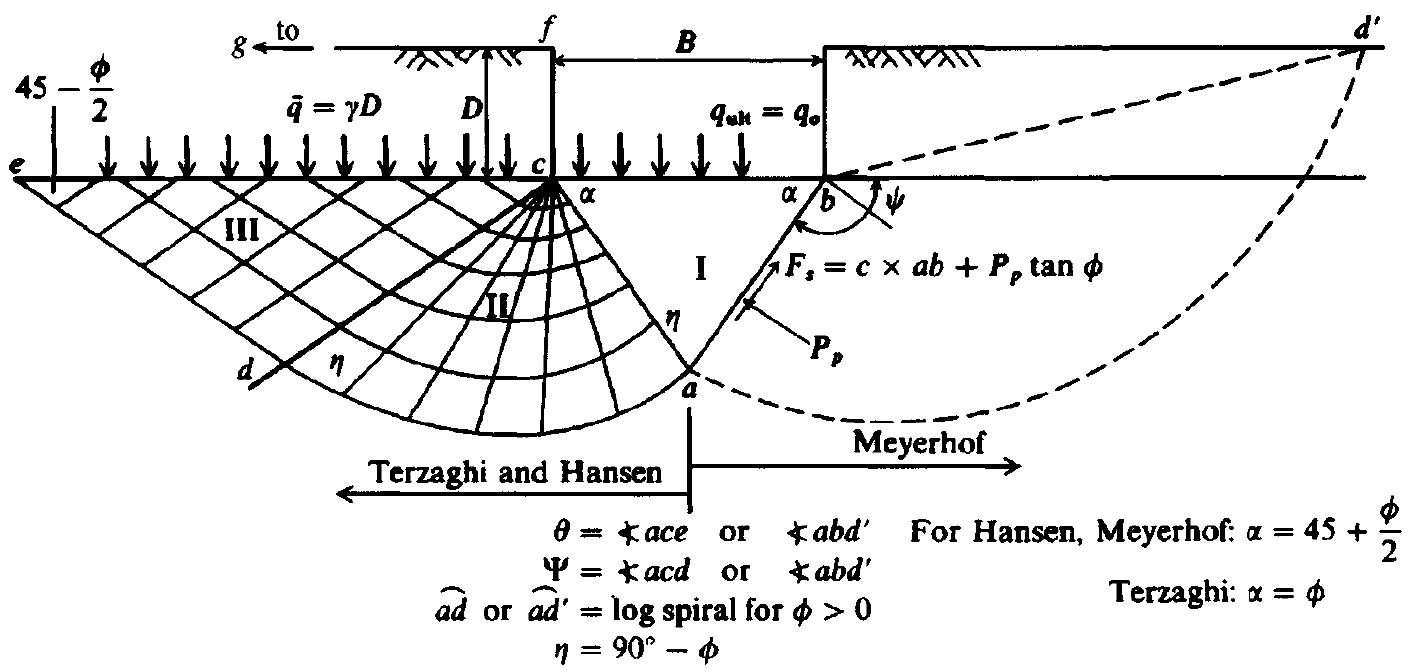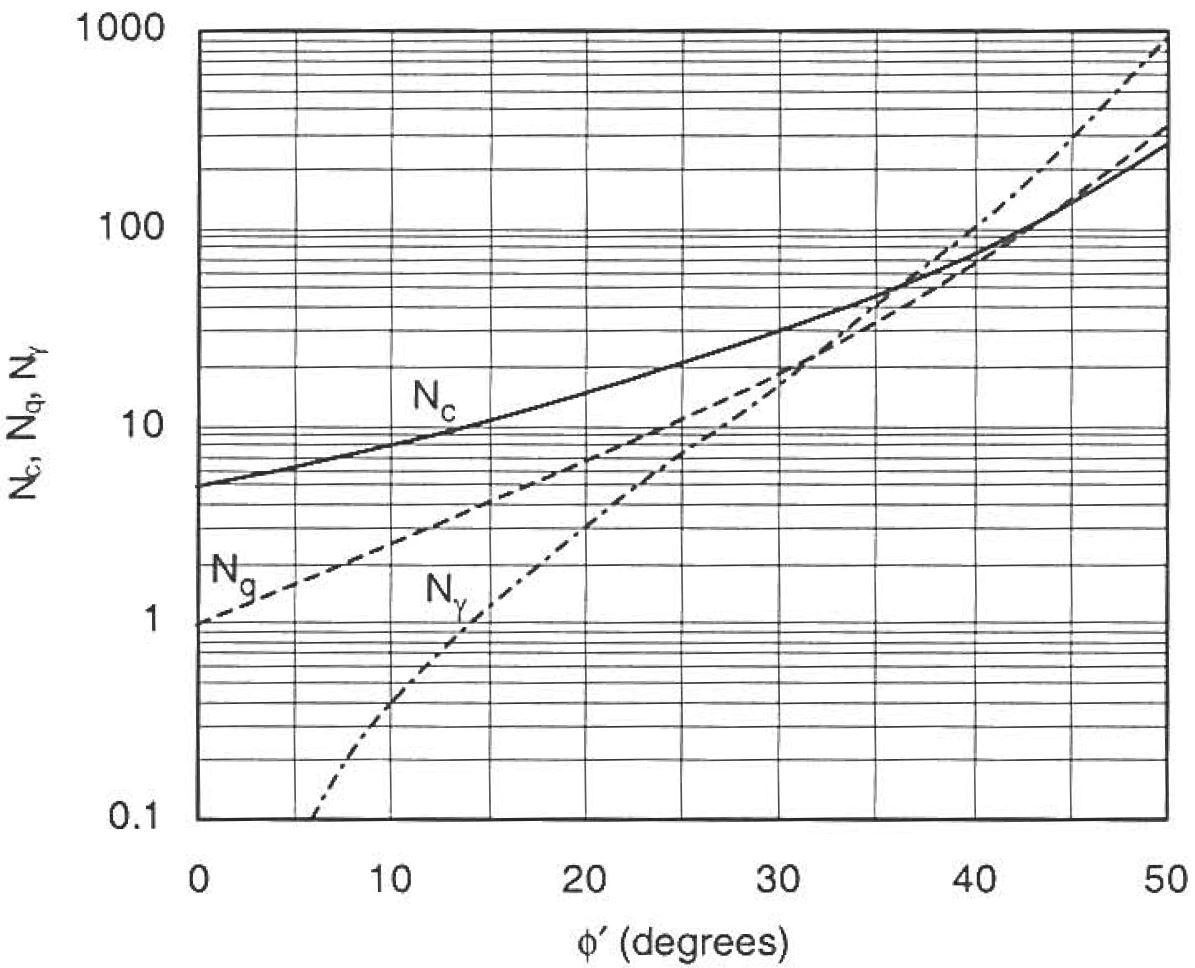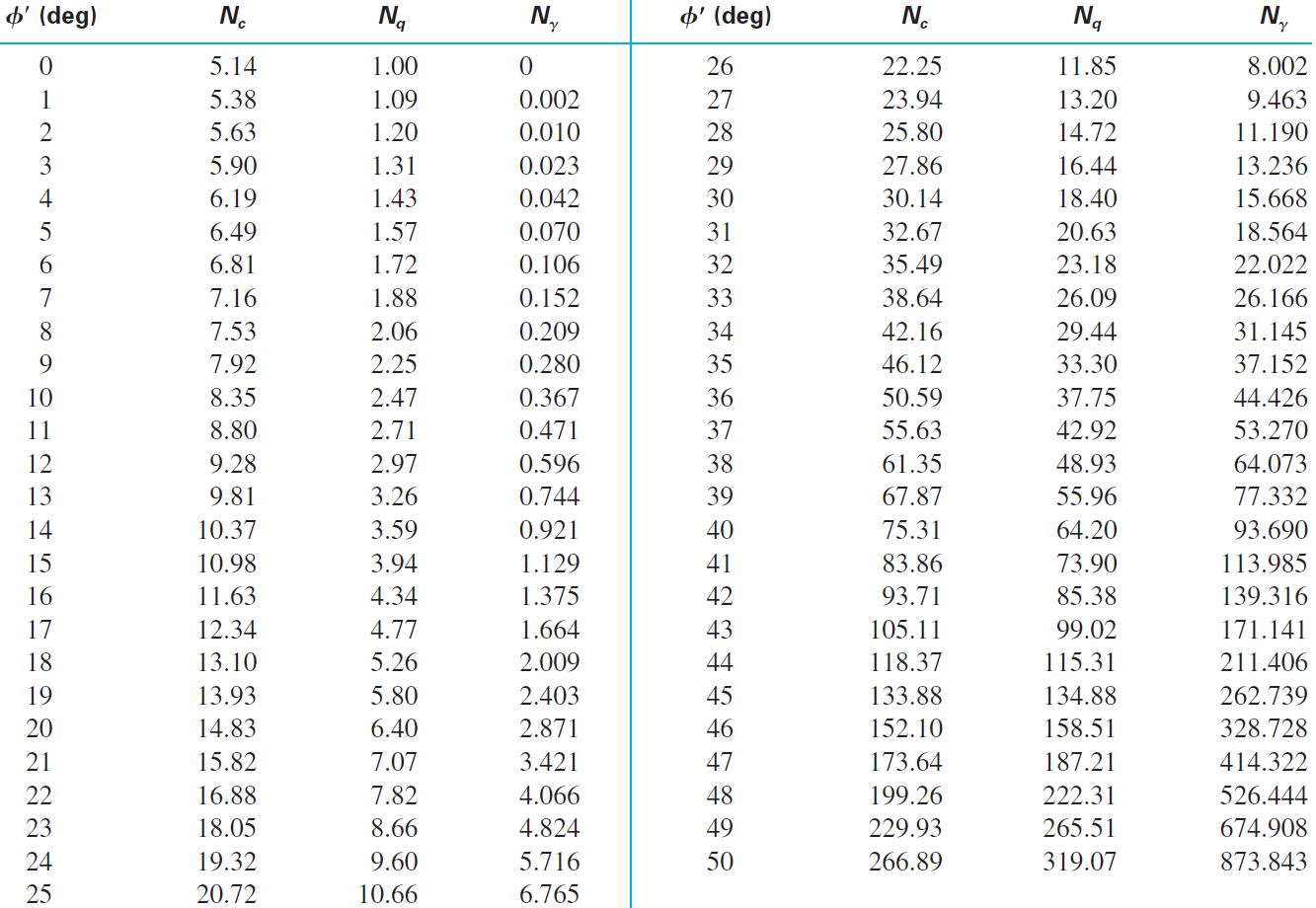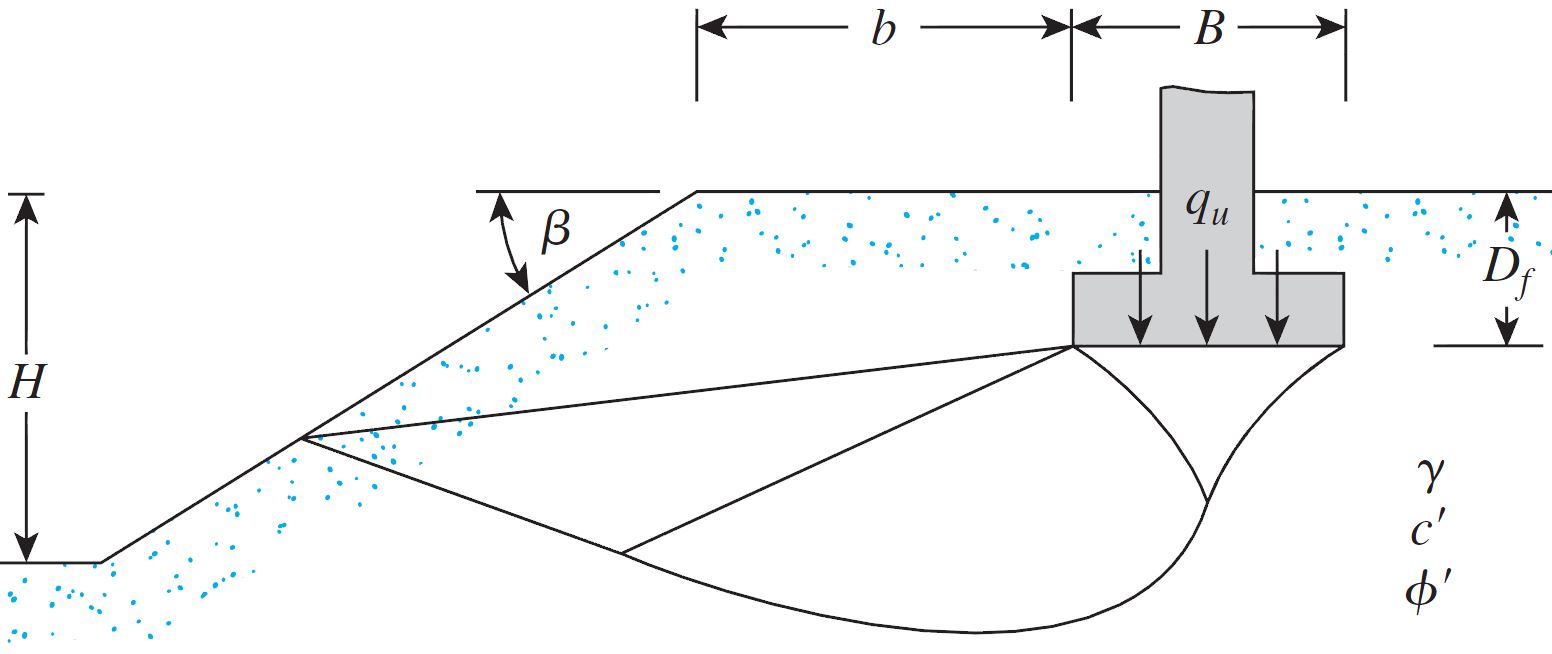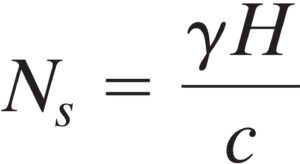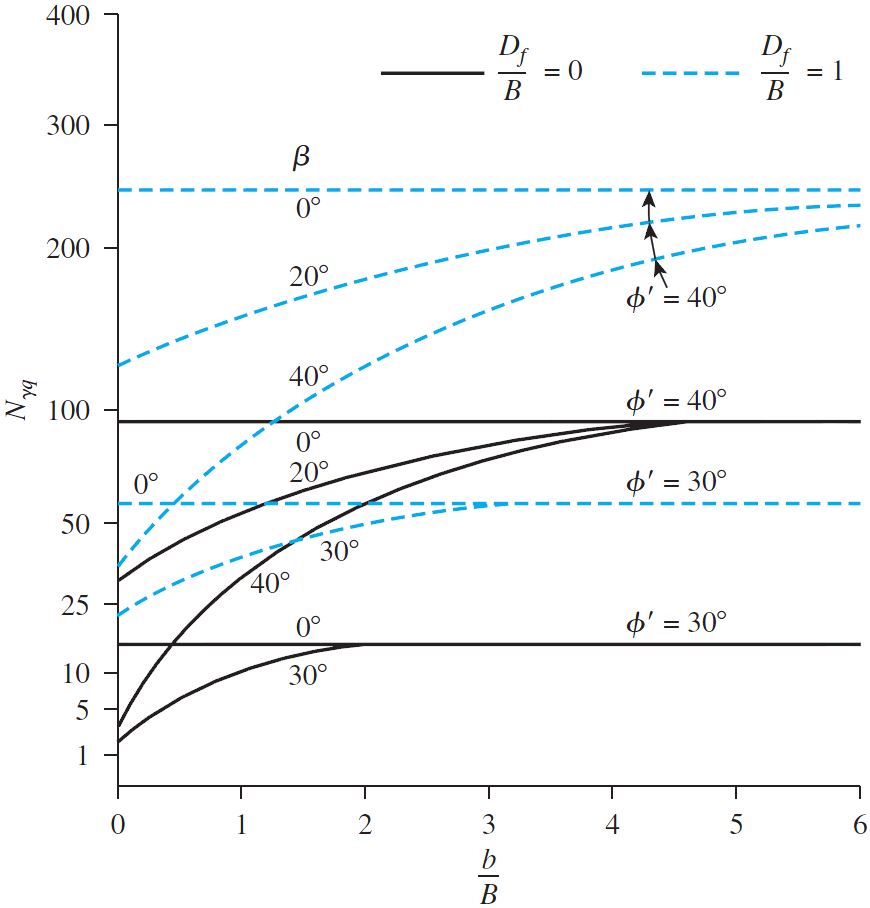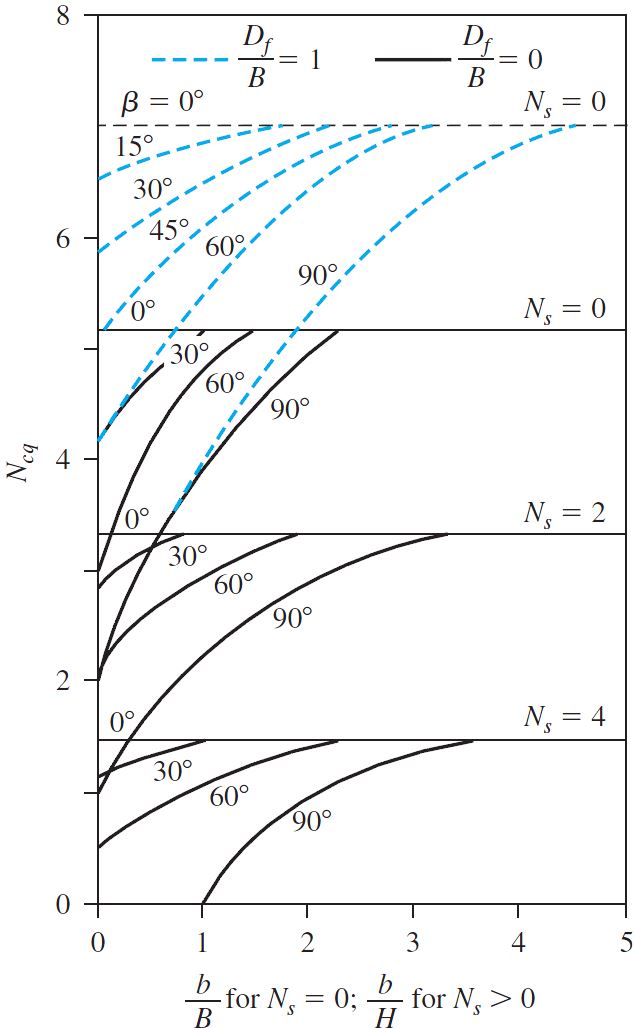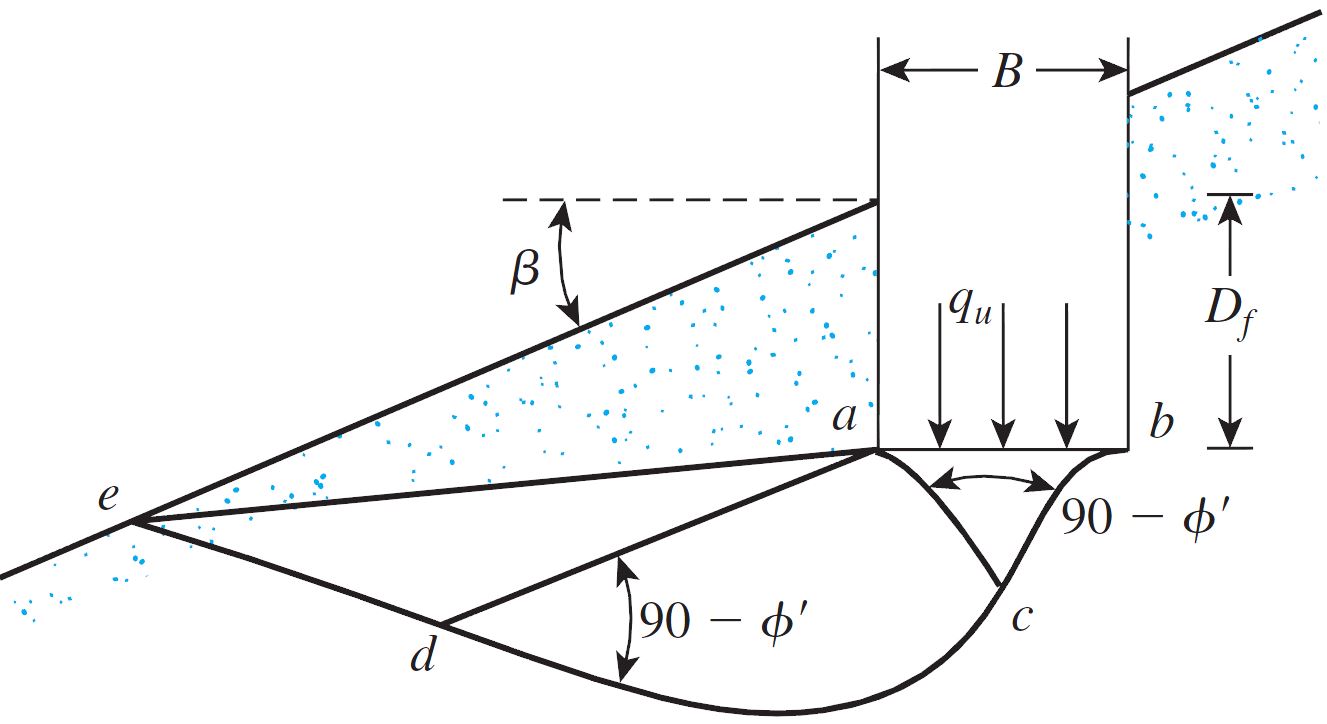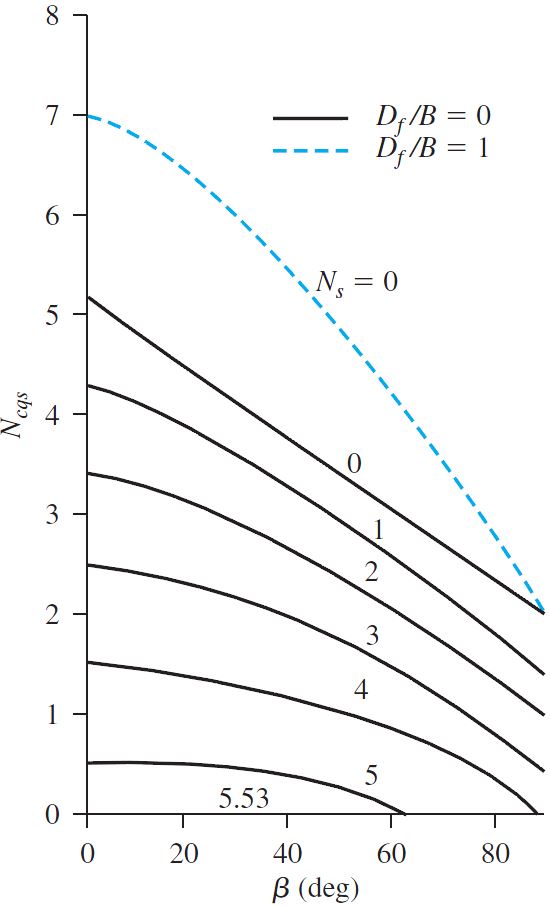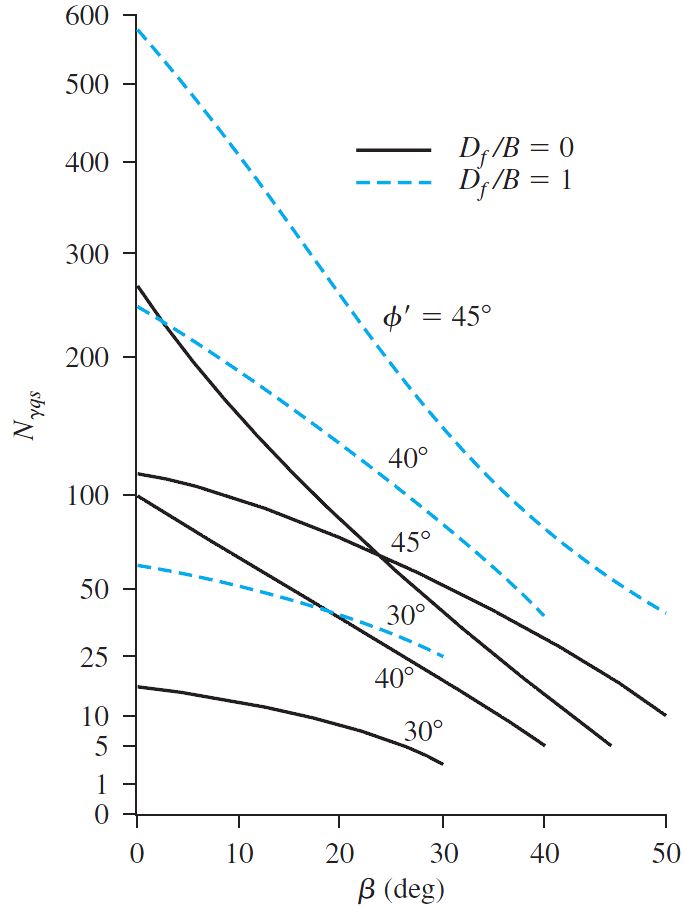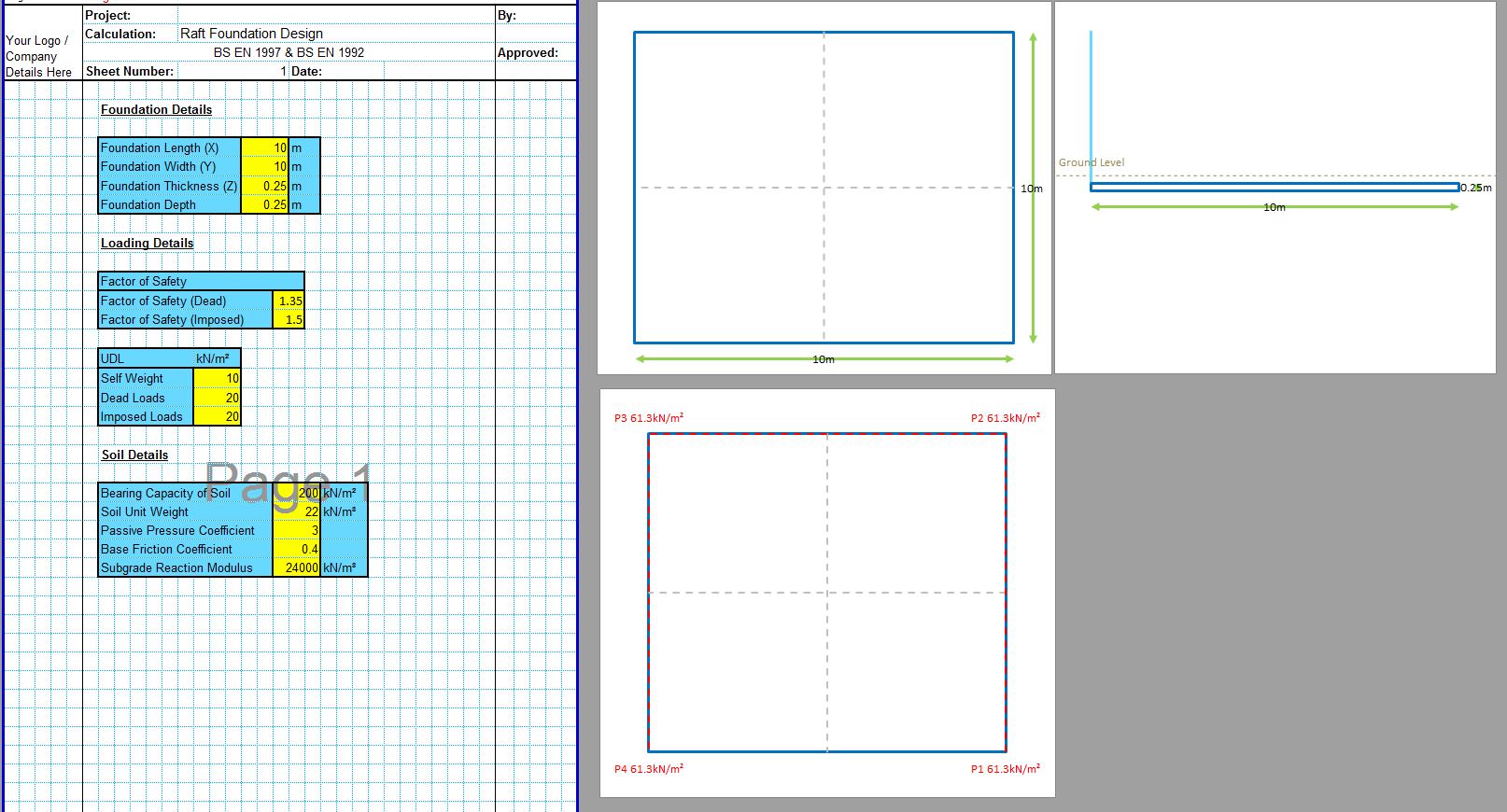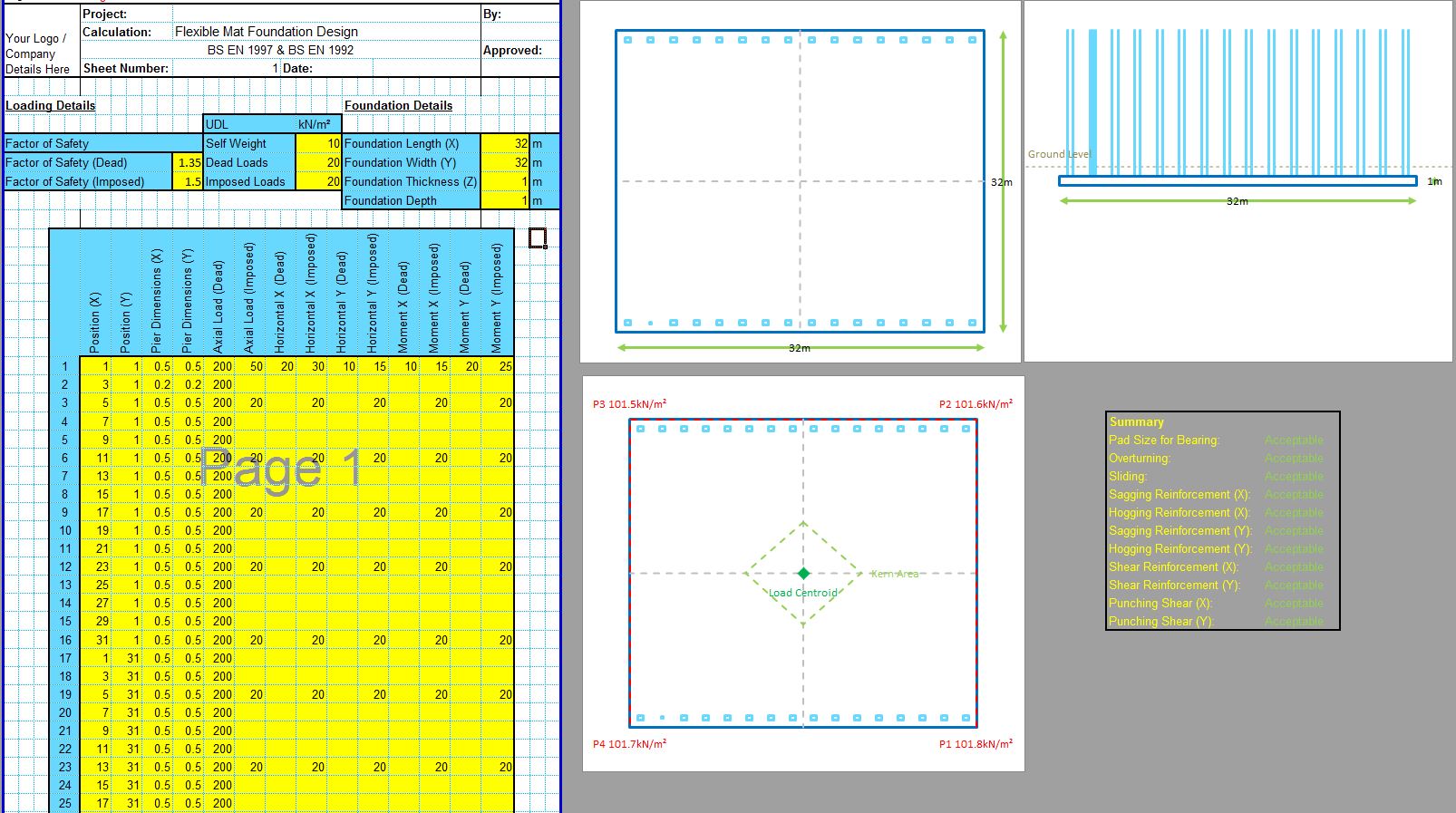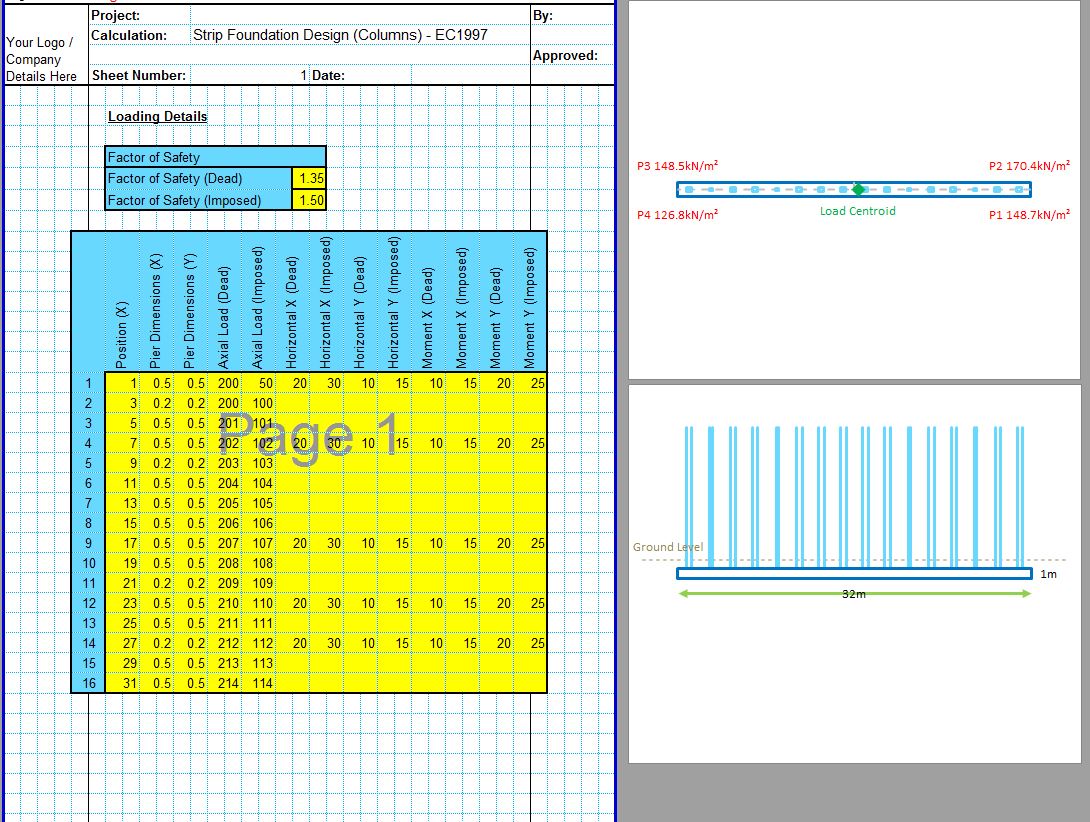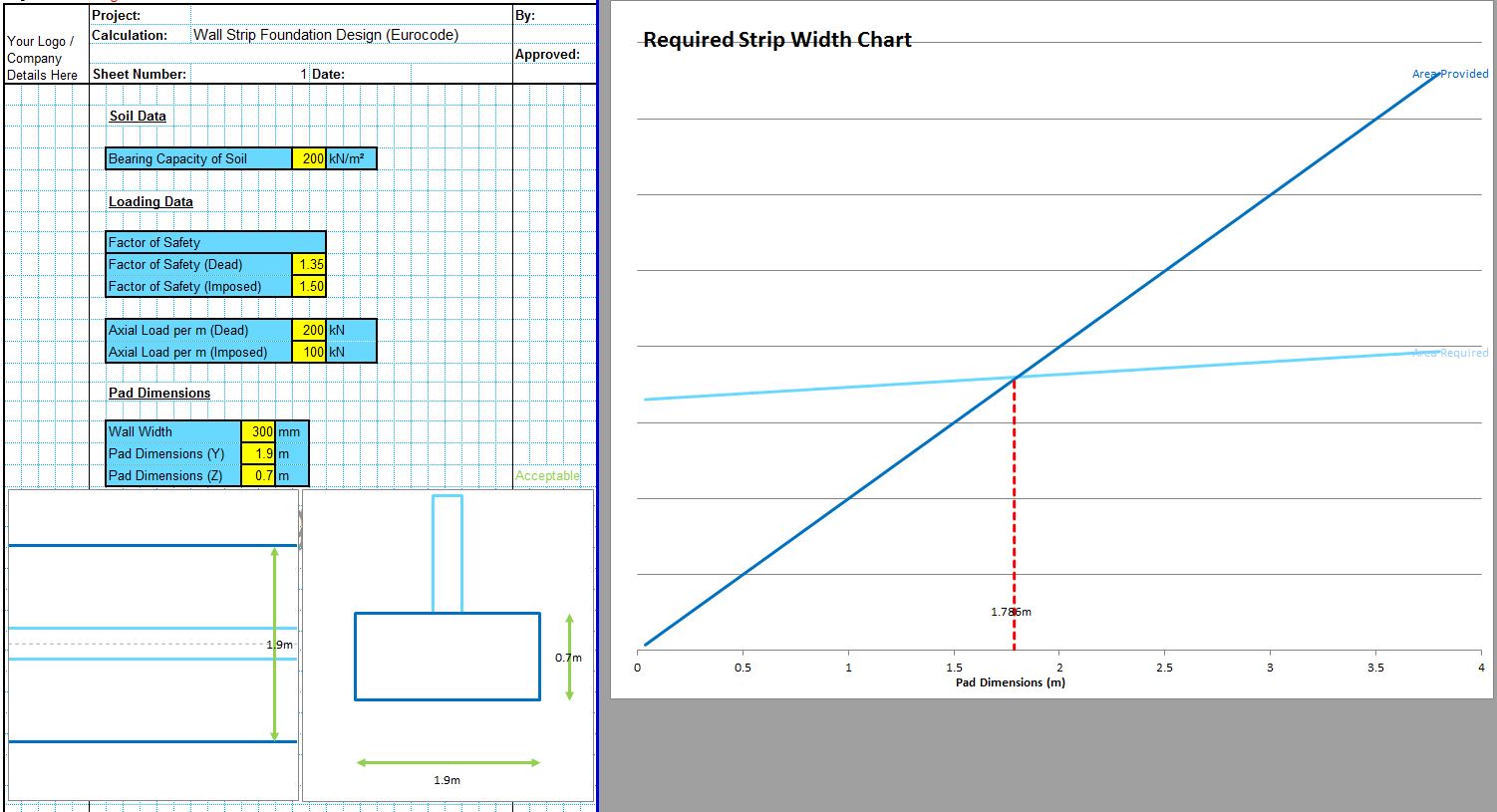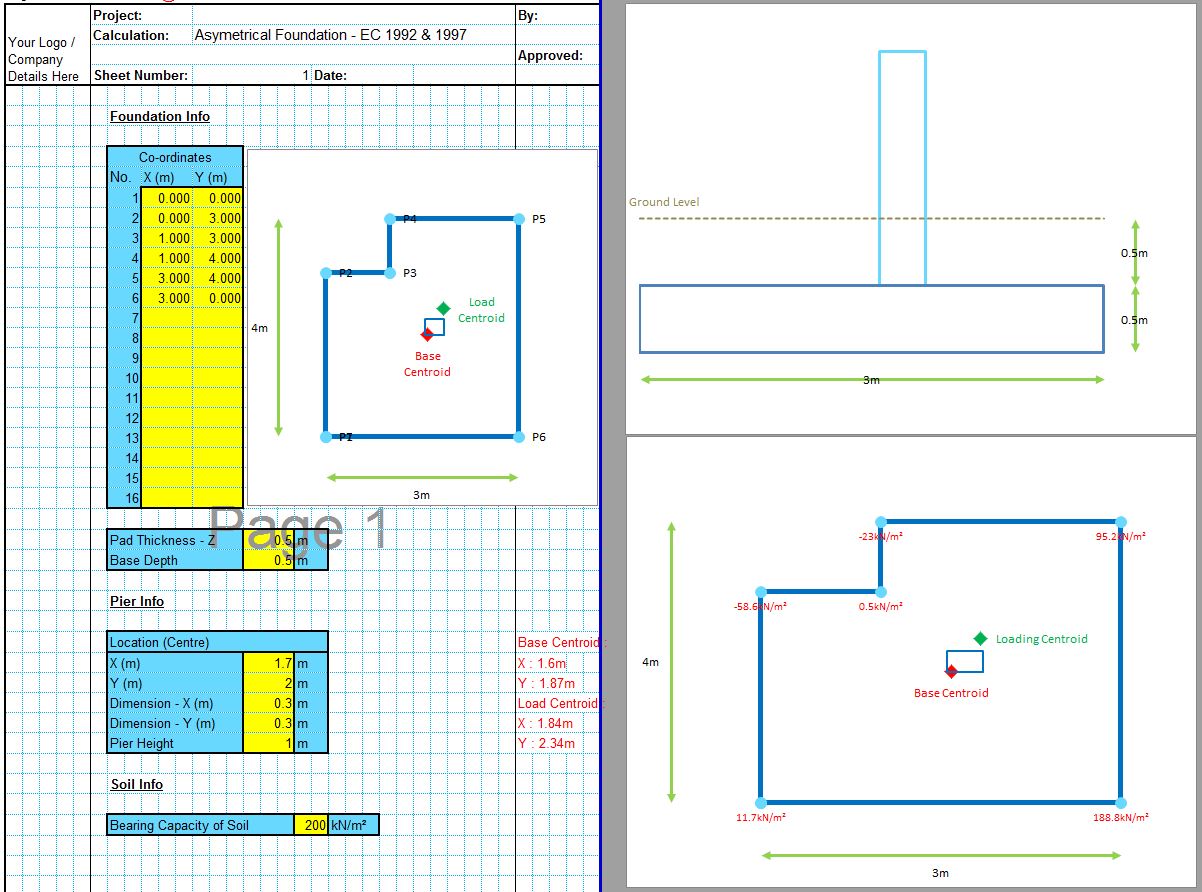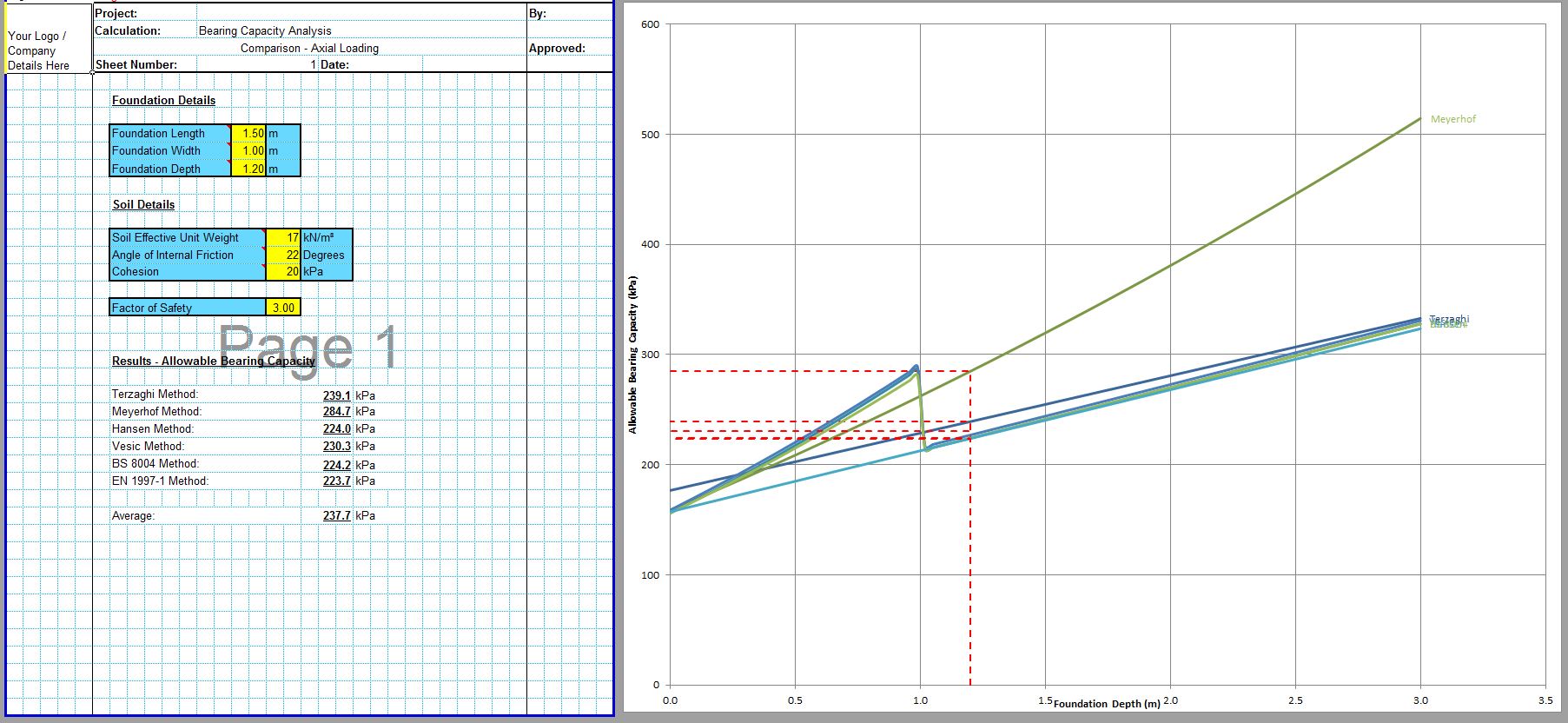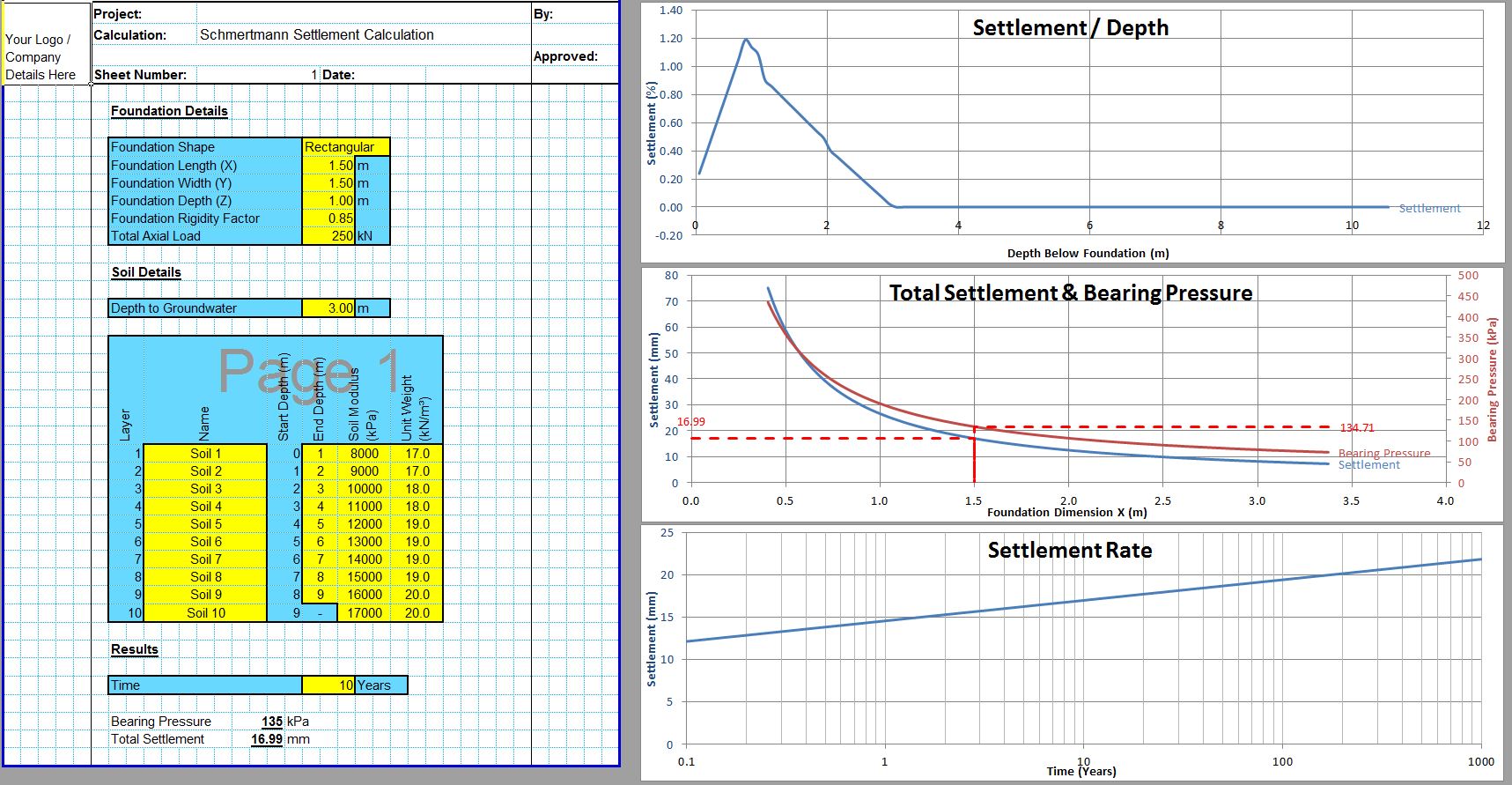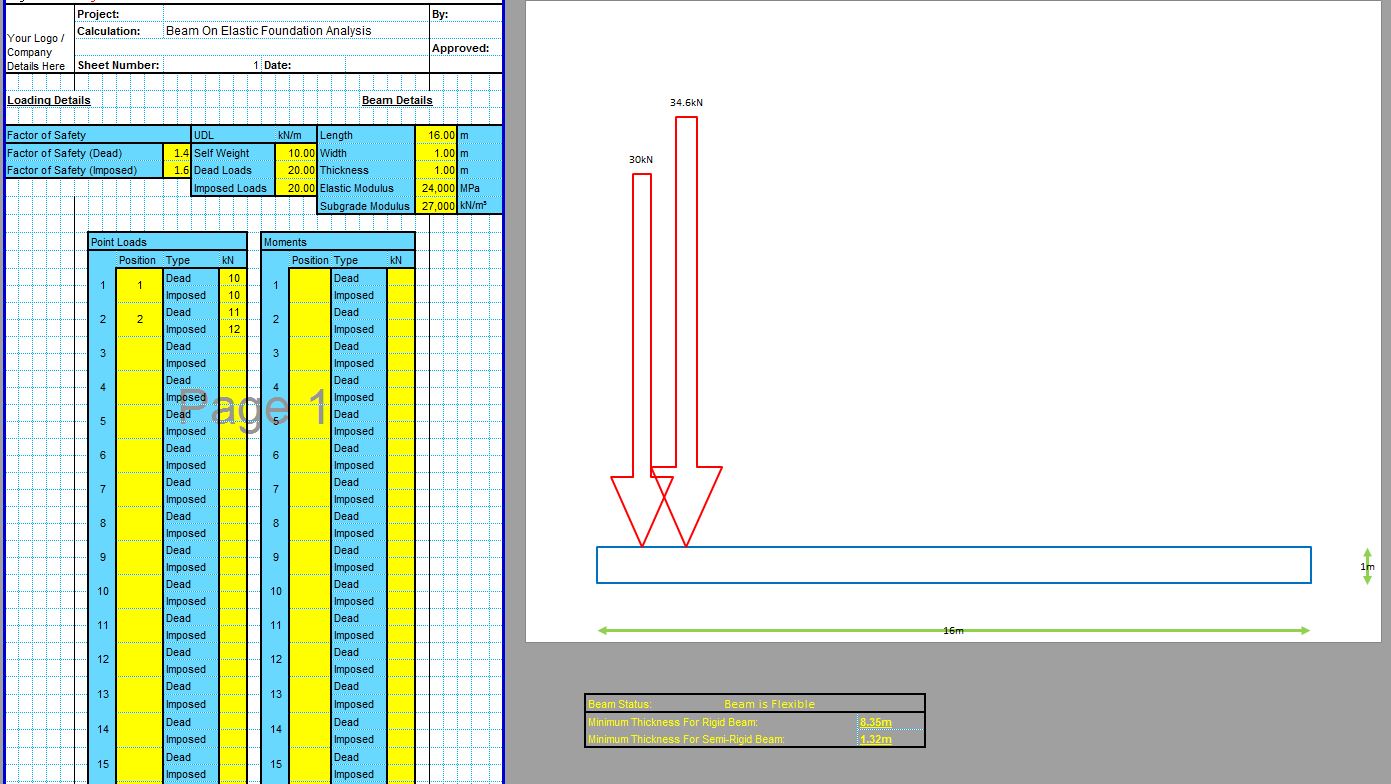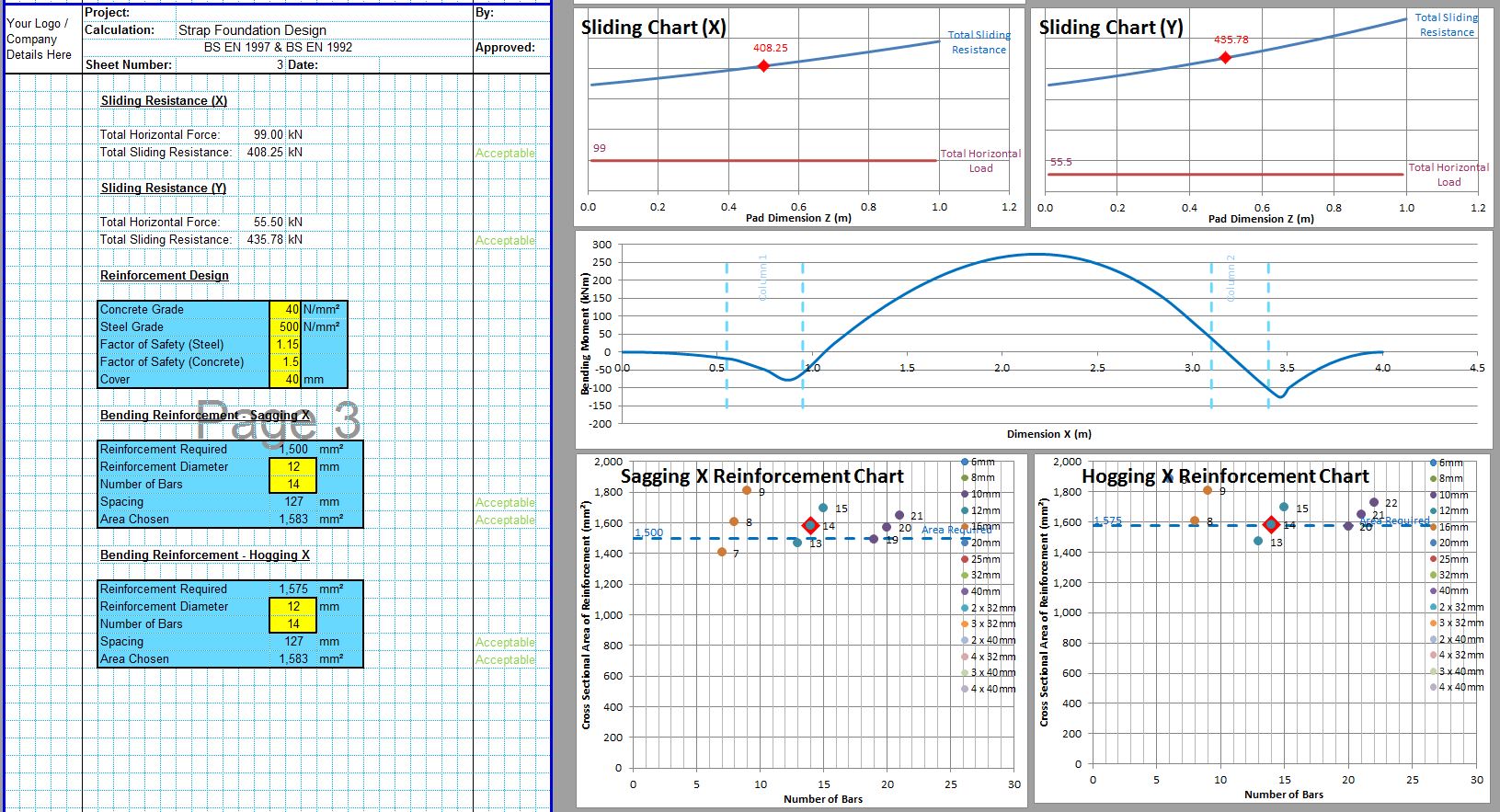The Meyerhof bearing capacity method is the most commonly used method of determining the bearing capacity of soils in the US and in other parts of the world. The Meyerhof bearing capacity method was developed as an improvement and extension of the Terzaghi method which is similar. The Meyerhof method includes additional site conditions which were not considered by Terzaghi such as foundations on slopes.
The CivilWeb Soil Bearing Capacity Calculation Excel Suite includes tools for determining the bearing capacity of soils using the Meyerhof bearing capacity method. Alternatively the Bearing Capacity Suite is also included in the full Foundation Design Suite which includes all 12 of our foundation design spreadsheets for only £50. This can also be purchased at the bottom of this page.
Meyerhof Bearing Capacity Analysis
In the 1950s and 1960s Meyerhof published an updated bearing capacity analysis method by extending Terzaghi’s equations to include the soil above the base of the foundation. This difference is illustrated in the below diagram showing the proposed shear failure surfaces for Terzaghi and Meyerhof.
Meyerhof also extended Terzaghi’s method to include for many common design conditions which Terzaghi had not allowed for including the shape and depth of the foundation and any inclination in the loading.
Meyerhof Bearing Capacity Equation
The general form of the Meyerhof bearing capacity analysis equation is shown below with the ultimate bearing capacity (qult) related to the cohesion (c), the effective overburden pressure at the level of the foundation base (q0’) which is equal to the effective unit weight of the soil multiplied by the depth to the base of the foundation (Df), the effective weight of the soil (γ) and the width of the foundation (B).
The equation then includes the bearing capacity factors (Nc, Nq, Nγ) which are determined using the below equations where Φ is the soils angle of internal friction.
As with other methods the bearing capacity factors have been presented as both graphs and tables for ease of calculation before computers. Examples of these tables and graphs are shown below.
Additional Modification Factors
The equation also includes modification factors for foundation shape (sc, sq, sγ), depth (dc, dq, dγ), load inclination (Ic, iq, iγ). These equations are shown below.
The depth factors account for the increased bearing capacity of the foundation at greater depth. This factor includes for the additional strength provided by the soils above the level of the foundation.
The shape factors are again used to adjust the allowable bearing capacity from the theoretical infinitely long strip foundation to a real foundation in three dimensions.
Eccentric Loads
The Meyerhof bearing capacity analysis method included a method of adjusting the bearing capacity calculation to include for the effects of eccentric loading. The Meyerhof bearing capacity method for eccentric loading was the first commonly used analysis method and is still commonly used today.
Eccentric loading occurs when a foundation is loaded from a column or base which is not located at the geometric centre of the foundation. This is common where foundations must be asymmetrical due to site constraints such as site boundaries. This condition results in a foundation which is not able to spread the bearing pressure evenly across its entire base.
Where eccentric loadings are present this can be accommodated in the bearing capacity analysis by calculating an effective foundation area. The actual dimensions of the foundation used in the bearing capacity analysis need to be altered to accommodate the eccentric loads. This can be done using the below equations;
Inclined Loads
Inclined loading occurs when a foundation is loaded both with vertical gravity loads and/or horizontal loads and bending moments. Horizontal and bending moment loads are often caused by wind loading on structures and bending moments are common for structures such as retaining walls.
Inclined loads have a big effect on the allowable bearing capacity of the soils both because inclination factors have a significant effect and because the inclined loads will produce non-uniform bearing pressures beneath the foundation as shown in the below diagram.
Meyerhof proposed load inclination factors which can be introduced in cases with inclined loadings as shown on the previous page. These inclination factors replace the shape modification factors in the Meyerhof bearing capacity method.
Foundations on Slopes
It is sometimes necessary to construct foundations close to, on top of or even on significant slopes. The slope will significantly affect the formation of the shear failure surfaces as used to calculate the soil bearing capacities, this will have a big effect on the allowable bearing capacity of the foundation. Meyerhof extended his bearing capacity analysis method to account for nearby slopes. The adjusted shear failure surfaces are shown in the below diagram.
The Meyerhof method for calculating bearing capacities on slopes involves the use of graphs to determine simple bearing capacity factors Ncq and Nγq which are then input into the below equation where c’ is the soil cohesion, γ is the unit weight of the soil and B is the strip foundation width;
These bearing capacity factors can be obtained from the below graphs where b is the distance to the top of the slope, and Df is the depth of the foundation as shown in the below diagram.
Note that the factor Ncq depends on Ns which is the stability number. This can be calculated using the below equation;
If the foundation width (B) is less than the total height of the slope (H), the curves for Ns=0 should be used. If the width is greater than or equal to the total height of the slope, the curve for the calculated Ns number should be used.
Bearing Capacity on Slope
Meyerhof also developed a method of estimating the bearing capacity of foundations on slopes. This method assumes the shear failure surfaces as shown in the below diagram;
The slope factors are replaced with Ncqs and Nγqs as shown in the below equations. They can be obtained from the below graphs.
Meyerhof Bearing Capacity Method -Conclusion
The Meyerhof bearing capacity method has been extended by subsequent publications to include even more common design cases such as ground or base inclination. However, the Meyerhof bearing capacity method remains in common use particularly in North America where the design conditions are suitable. In Europe other methods are more commonly used such as Hansen’s method or Vesic’s method.
CivilWeb Soil Bearing Capacity Calculation Excel Suite
The CivilWeb Soil Bearing Capacity Calculation Excel Suite includes a spreadsheet which can be used to complete a full Meyerhof bearing capacity analysis. The CivilWeb Soil Bearing Capacity Calculation Excel Suite includes 6 different bearing capacity analysis methods including the Meyerhof, Terzaghi and Hansen methods. The spreadsheet also includes unique comparison tools which complete the analysis using all 6 design methods allowing the designer to see an average value. This will save the designer hours of work on every bearing capacity analysis and ensure that the most appropriate result is used every time.
Buy the CivilWeb Soil Bearing Capacity Calculation Excel Suite now for only £20.
Purchase the our Soil Bearing Capacity and Settlement Calculation Bundle for only £25.
Or buy our best value bundle, the full Foundation Design Suite including all 12 of our foundation design spreadsheets at a discount of 80%.
Download Free Trial Version
To try out a fully functional free trail version of this software, please enter your email address below to sign up to our newsletter.
Other Foundation Design Spreadsheets;
Foundation Design Spreadsheet Suite
Our full Foundation Design Suite includes all 12 of our foundation design spreadsheets for only £50 (80% discount).



